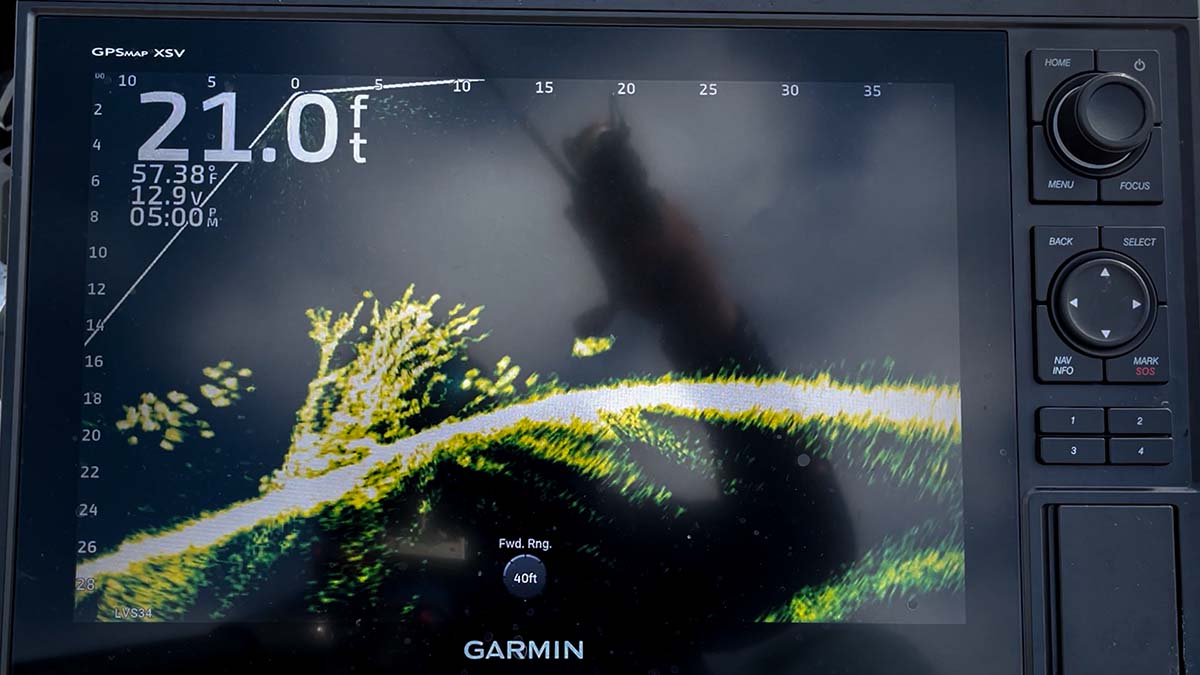I was fortunate to get the new Garmin Livescope Plus technology a couple months before it was available to the public and spent a lot of time testing the settings, limitations, and improved image quality and signal processing to give a full report on the newest forward facing sonar technology from the originators at Garmin. I have also spent a good bit of time at Garmin headquarters and on conference calls with their engineers to fully understand how these products are developed and why the enhancements we’re seeing are coming out now.
I started using Livescope Plus in early March, and I was testing it mostly in deep water chasing fish that were still out on deep structure and brush waiting for the water to warm. The first thing I noticed was a good bit of improved definition. My graph was making out a lot more detail on brush piles like more of the smaller branches on the medium branches on the big branches were showing up. So instead of seeing just a blob. I was seeing the individual smaller forks on the bigger forks. But more than that I was seeing WAY more target separation than with my previous Livescope. I was seeing a lot more movement of fish in cover. I was see more defined targets in the brush.
I also was getting a lot more depth to my image. By depth I mean three-dimensional depth. I was seeing things in the foreground and background transition a lot more clearly as I panned around looking at cover.
I was seeing fish movement a lot more clearly, where I could tell the fish was facing left or right. I could see my bait out to a much greater distance and I was now scanning 80 feet looking for cover instead of my normal 60.
Here is my starting point for settings with Livescope Plus:
- Downloaded and Installed latest 27.10 update on my units and 2.58 on GLS10 box.
- Trolling motor calibration done with ARHS on.
- Color Gain at 55.
- TVG to Off.
- Noise Reject to Low or Medium to start.
- Ghost Reject to Auto.
- Gain at about 62-68 depending on sediment in the water.
- Color Limit to about 30-40 again depending on sediment and Gain settings.
Now I will adjust these settings based on where I’m fishing, water sediment, depth, bottom hardness, even sometimes wind or sky conditions. People need to understand that Garmin units are for advanced electronics users. They offer so much control over every aspect of the technology, that you can really dial in these screens perfectly. But you need to spend time modifying each setting based on other settings. With Livescope Plus, Color Limit and Gain work in tandem. If you turn Color Limit up, you will want to turn Gain up or else you will lose your jig or detail of the fish in cover.
Everything from these settings to even the newer gradient palettes work in tandem with the new Livescope Plus to give you loads of detail on very clean pictures. While the engineers will tell you there is about a 35% increase in resolution, detail and target separation, you are also getting reduced noise and sonar artifacts, which all gives you a much cleaner picture with increased detail.
This is as happy as I have been with my forward facing sonar, and I already loved my original Livescope. So this new Livescope Plus is going to be a really fun technology for 2022.
See more about how Livescope works here.
Equipment Used:
- Garmin Livescope Plus, buy at TackleWarehouse
- Garmin GPSMap1242, buy at Garmin
- Garmin Force Trolling Motor, buy at TackleWarehouse











